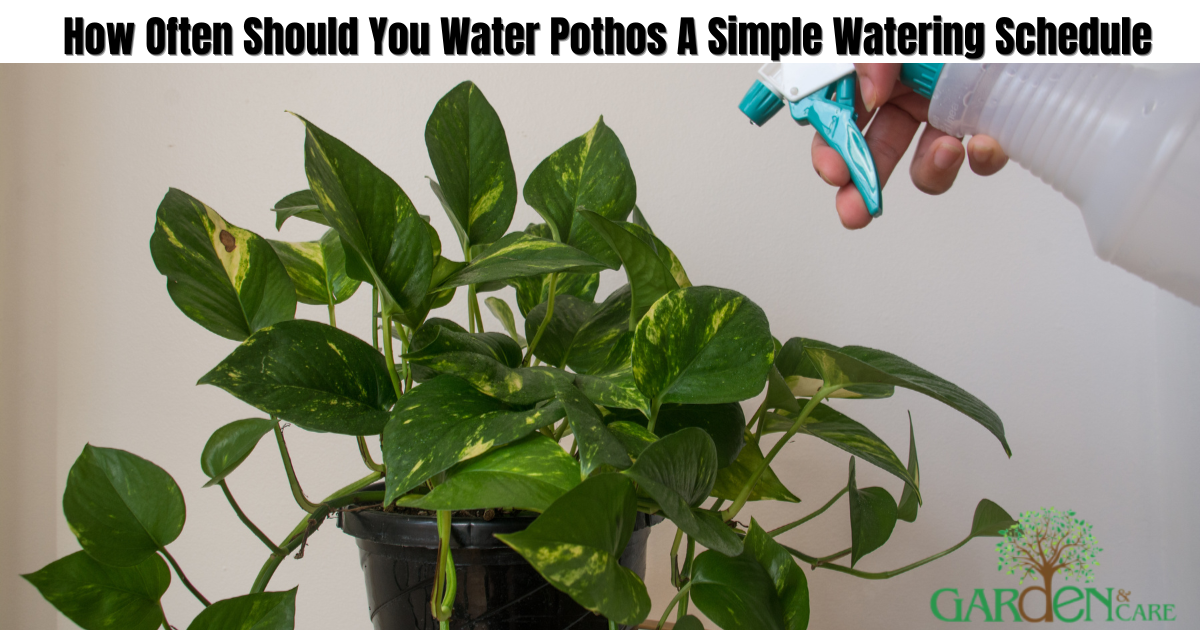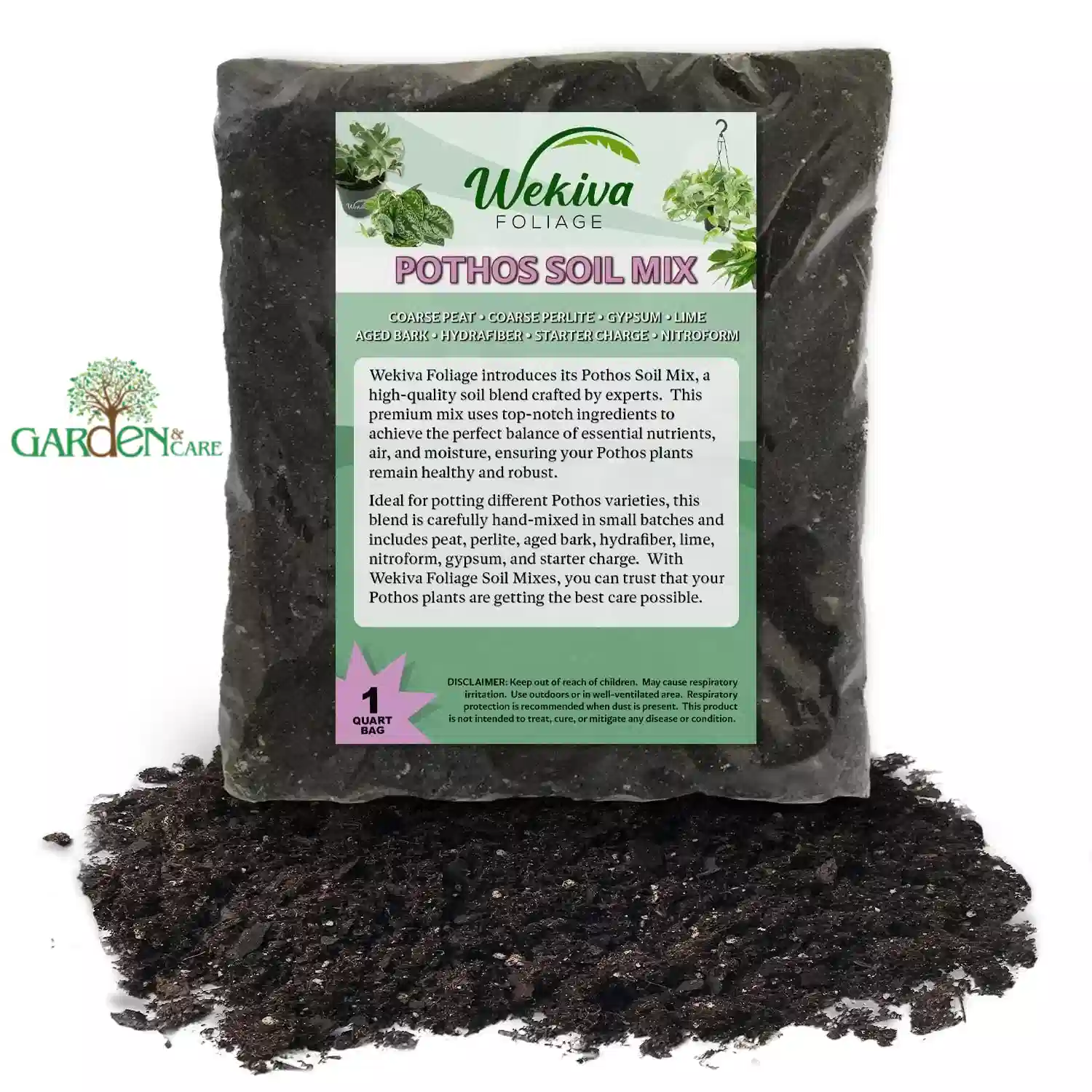I. Introduction
Pothos, also known as devil’s ivy, is one of the most loved indoor plants around the world. It’s popular because it’s easy to grow, looks beautiful, and can survive in different light conditions. Whether you’re a beginner or an experienced plant lover, a pothos plant is a great choice for your home or office.
Even though pothos is low-maintenance, one thing many plant owners still struggle with is watering. Watering might sound simple, but it’s actually the most common reason why indoor plants—especially pothos—start to look sad or die. Too much water can rot the roots, and too little water can make the leaves droopy and dry.
That brings us to the most important question:
“How often should you water your pothos?”
This blog will give you a simple, easy-to-follow watering guide, so you can keep your pothos healthy, happy, and green.
General Watering Schedule
So, how often should you water your pothos?
👉 The short answer: On average, every 7 to 10 days.
But keep in mind — this is just a general rule. Your pothos might need more or less water depending on a few key things:
- Light: Pothos in bright, indirect sunlight will dry out faster than those in low-light corners.
- Season: In warmer months (spring and summer), your plant grows more and drinks more water. In colder months (fall and winter), it slows down and needs less.
- Pot Type: Plants in clay pots lose moisture quicker than those in plastic or ceramic pots.
- Room Temperature: Hotter rooms make the soil dry faster. Cooler rooms slow down drying.
- Plant Size: Smaller plants usually dry out faster than large, mature pothos.
✅ Tip: Use the 7–10 day window as a starting point, but always check your plant and soil before watering.
🌿 Factors That Affect Pothos Watering Needs
Watering a pothos isn’t a one-size-fits-all job. Several things affect how often your plant needs a drink. Let’s break it down:
a. 🪴 Plant Size
- Smaller plants and pots dry out faster. There’s less soil to hold water, so it evaporates quickly.
- Larger plants in big pots hold moisture longer. These need less frequent watering.
b. 🌸 Seasonal Changes
- Spring and Summer: Your pothos grows fast and needs more water. This is its growing season.
- Fall and Winter: Growth slows down. That means your plant drinks less, so water less often.
c. ☀️ Light Levels
- Bright, indirect sunlight = more water use. Plants in sunny spots dry out faster.
- Low light = less water needed. In darker rooms, the soil stays moist longer.
d. 🌡️ Temperature & Humidity
- Warm rooms = fast drying. If your home is hot or dry, the soil loses moisture quickly.
- Cool or humid rooms = slower drying. Moisture sticks around longer, so wait before watering.
e. 🪵 Pot Material & Drainage
- Clay pots absorb water and dry out faster — good for avoiding soggy roots.
- Plastic or ceramic pots hold in moisture longer, so water less often.
- Pots with drainage holes are safer. Extra water escapes easily, so roots don’t rot.
- Pots without drainage holes trap water inside — be extra careful not to overwater!
✅ Tip: Every plant and home is different. Pay attention to these factors to create the perfect watering routine for your pothos.
💧 How to Check If Your Pothos Needs Water
Not sure if it’s time to water your pothos? Don’t worry—your plant gives you clear signs. Here are three easy ways to know when it’s thirsty:
a. 👆 Finger Test (No tools needed!)
This is the simplest way to check:
- Gently stick your finger into the soil—about 2 to 3 inches deep.
- If the soil feels dry: It’s time to water.
- If it still feels moist: Wait a few more days and check again.
✅ Tip: Always test more than one spot around the plant to get an accurate feel.
b. 🌡️ Moisture Meter (For a more accurate read)
A soil moisture meter is a great tool if you want a no-guess method:
- Insert the probe deep into the soil (but avoid touching the pot’s bottom).
- Check the reading:
- Dry zone: Your pothos needs water.
- Moist or wet zone: Hold off on watering.
- Dry zone: Your pothos needs water.
This tool is especially helpful if you’re a beginner or nervous about overwatering.
c. 🍃 Leaf Behavior (Watch the plant!)
Pothos plants are great communicators. Just look at the leaves:
- Droopy or limp leaves: Your plant is thirsty.
- Perky, upright leaves: Your pothos is happy and doesn’t need water yet.
✅ Bonus Tip: The more you observe your plant, the easier it will be to understand its watering rhythm!
💦 Watering Tips to Avoid Overwatering Your Pothos
Overwatering is one of the most common reasons houseplants struggle — and pothos is no exception. Follow these easy tips to keep your plant healthy and happy:
✅ 1. Always Empty the Saucer Under the Pot
After watering, check the tray or saucer under your pothos pot.
- Standing water = danger.
- It can cause root rot if the roots sit in water too long.
Tip: Empty the saucer about 15–30 minutes after watering.
✅ 2. Use Pots with Drainage Holes
Good drainage is key to healthy roots.
- Choose a pot that has holes at the bottom so extra water can flow out.
- This helps prevent soggy soil and root rot.
🌱 Pro Tip: Avoid pots without holes—even if they look pretty!
✅ 3. Let the Soil Dry Out Between Watering
Pothos likes a little dryness between drinks.
- Wait until the top 2–3 inches of soil feels dry before watering again.
- Don’t keep the soil constantly wet.
Letting the soil partially dry encourages strong roots and healthy growth.
✅ 4. Don’t Water on a Strict Calendar
It’s tempting to water every Sunday—but plants don’t work on our schedule.
- Always check the soil first using your finger or a moisture meter.
- Water only when the plant needs it, not because the calendar says so.
🌿 Simple Pothos Watering Schedule Table
| Condition | How Often to Water |
| Low light + winter + small pot | Every 10–14 days |
| Low light + summer + plastic pot | Every 7–10 days |
| Bright light + summer + clay pot | Every 5–7 days |
| Medium light + spring/fall + ceramic pot | Every 6–9 days |
| Bright light + winter + large pot | Every 8–12 days |
✅ Quick Tip: Always check the soil moisture before watering. Don’t rely only on the calendar — soil and plant behavior tell you the real story.
Frequently Asked Questions About Pothos Watering
💧 How do I know if I’m overwatering my pothos?
If your pothos has yellowing leaves, mushy stems, or wet soil for days, you might be overwatering. Check if the soil feels soggy even several days after watering. Also, watch out for a musty smell or mold on the soil surface — clear signs it’s too wet.
⏳ Can pothos go without water for two weeks?
Yes, most healthy pothos plants can survive 2 weeks without water — especially in low light or cooler rooms. However, the soil may dry out too much, which could lead to droopy leaves or slow growth. Always check soil moisture before waiting that long.
⚖️ Is it better to underwater or overwater?
It’s better to slightly underwater than overwater. Pothos can bounce back from dry soil with a good watering. But too much water can cause root rot, which is harder to fix. When in doubt, wait a day or two and test the soil again.
🌡️ What water temperature is best for pothos?
Use room-temperature water — not cold from the tap and not hot. Cold water can shock the roots, and hot water can damage them. Let tap water sit for 10–15 minutes before using, especially if your area has chlorinated water.
📚 Conclusion:
Find Your Pothos Watering Rhythm
Pothos plants are beautiful and low-maintenance, but they are still sensitive to overwatering. Giving your plant too much water is one of the most common mistakes new plant parents make.
The key is to understand your plant’s light, pot, temperature, and season, then use simple checks like the finger test, a moisture meter, or leaf observation to guide your watering.
✅ Final Tip: Start checking your pothos once a week. Over time, you’ll learn your plant’s unique pattern — and that’s when watering becomes easy and stress-free!
🌿 Ready to grow a healthy pothos? Begin your weekly check today and build your perfect watering schedule!





Leave a Reply